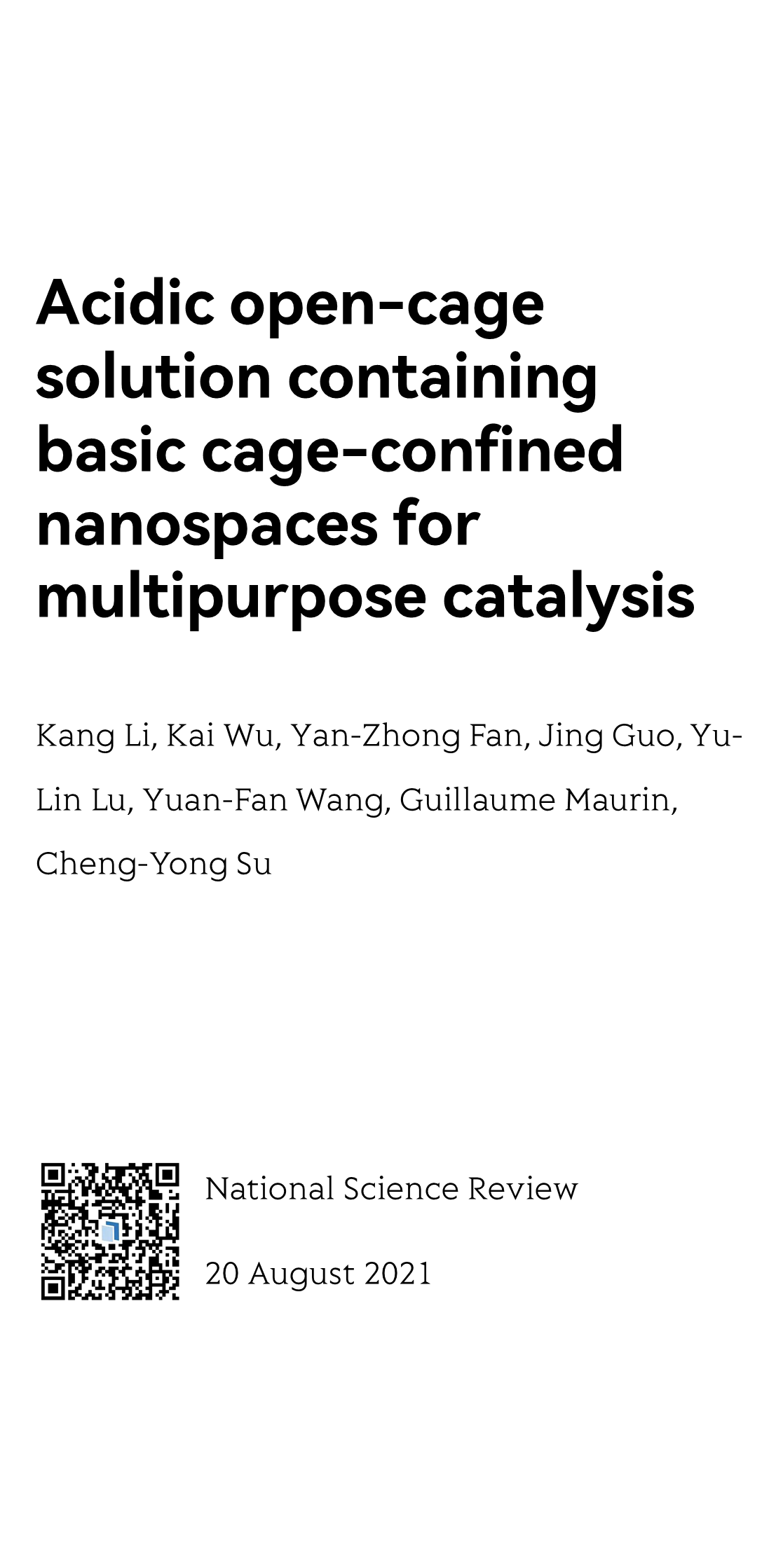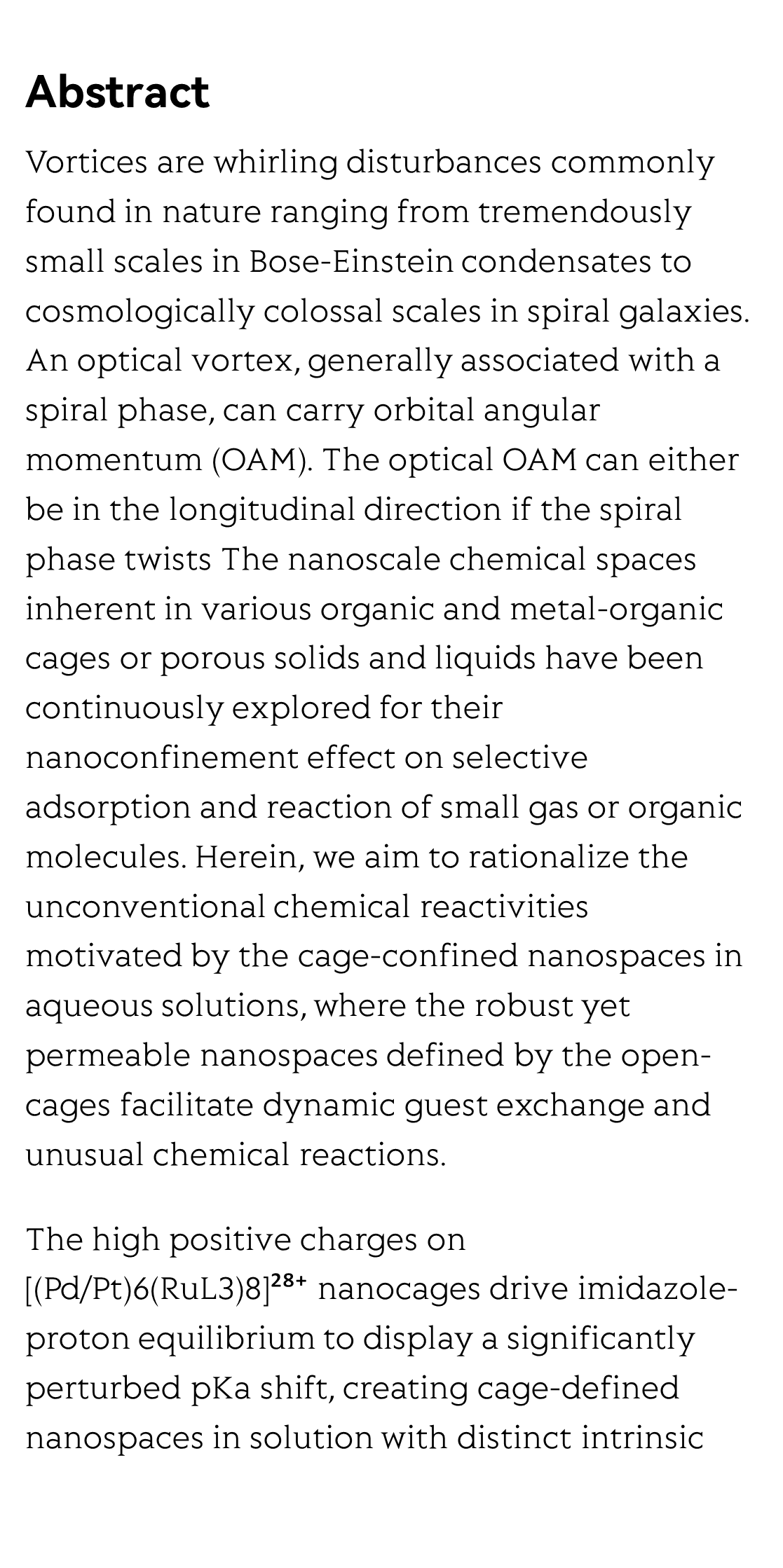(Peer-Reviewed) Acidic open-cage solution containing basic cage-confined nanospaces for multipurpose catalysis
Kang Li 李康 ¹ ², Kai Wu 吴凯 ¹, Yan-Zhong Fan ¹ ³, Jing Guo ¹, Yu-Lin Lu ¹, Yuan-Fan Wang ¹, Guillaume Maurin ³, Cheng-Yong Su 苏成勇 ¹
¹ MOE Laboratory of Bioinorganic and Synthetic Chemistry, Lehn Institute of Functional Materials, School of Chemistry, Sun Yat-Sen University, Guangzhou 510275, China
中国 广州 中山大学生物无机与合成化学教育部重点实验室,莱恩功能材料研究所,中山大学化学学院
² School of Chemistry, South China Normal University, Guangzhou 510006, China
中国 广州 华南师范大学化学学院
³ Institut Charles Gerhardt Montpellier, Centre National de la Recherche Scientifique, École Nationale Supérieure de Chimie de Montpellier, Université de Montpellier, Montpellier 34095, France
National Science Review, 2021-08-20
Abstract
The nanoscale chemical spaces inherent in various organic and metal-organic cages or porous solids and liquids have been continuously explored for their nanoconfinement effect on selective adsorption and reaction of small gas or organic molecules. Herein, we aim to rationalize the unconventional chemical reactivities motivated by the cage-confined nanospaces in aqueous solutions, where the robust yet permeable nanospaces defined by the open-cages facilitate dynamic guest exchange and unusual chemical reactions.
The high positive charges on [(Pd/Pt)6(RuL3)8]²⁸⁺ nanocages drive imidazole-proton equilibrium to display a significantly perturbed pKa shift, creating cage-defined nanospaces in solution with distinct intrinsic basicity and extrinsic acidity. The supramolecular cage effect plays pivotal roles in elaborating robust solution nanospaces, controlling ingress-and-egress molecular processes through open-cage portals, and endowing nanocages with transition-state stabilization, amphoteric reactivities and the phase transfer of insoluble molecules, thus promoting chemical transformations in unconventional ways.
Consequently, a wide application of cage-confined catalysis with anomalous reactivities may be expected based on this kind of open-cage solution medium, which combines cage nanocavity, solution heterogeneity and liquid-phase fluidity to benefit various potential mass transfer and molecular process options.
Flicker minimization in power-saving displays enabled by measurement of difference in flexoelectric coefficients and displacement-current in positive dielectric anisotropy liquid crystals
Junho Jung, HaYoung Jung, GyuRi Choi, HanByeol Park, Sun-Mi Park, Ki-Sun Kwon, Heui-Seok Jin, Dong-Jin Lee, Hoon Jeong, JeongKi Park, Byeong Koo Kim, Seung Hee Lee, MinSu Kim
Opto-Electronic Advances
2025-09-25
Dual-frequency angular-multiplexed fringe projection profilometry with deep learning: breaking hardware limits for ultra-high-speed 3D imaging
Wenwu Chen, Yifan Liu, Shijie Feng, Wei Yin, Jiaming Qian, Yixuan Li, Hang Zhang, Maciej Trusiak, Malgorzata Kujawinska, Qian Chen, Chao Zuo
Opto-Electronic Advances
2025-09-25







